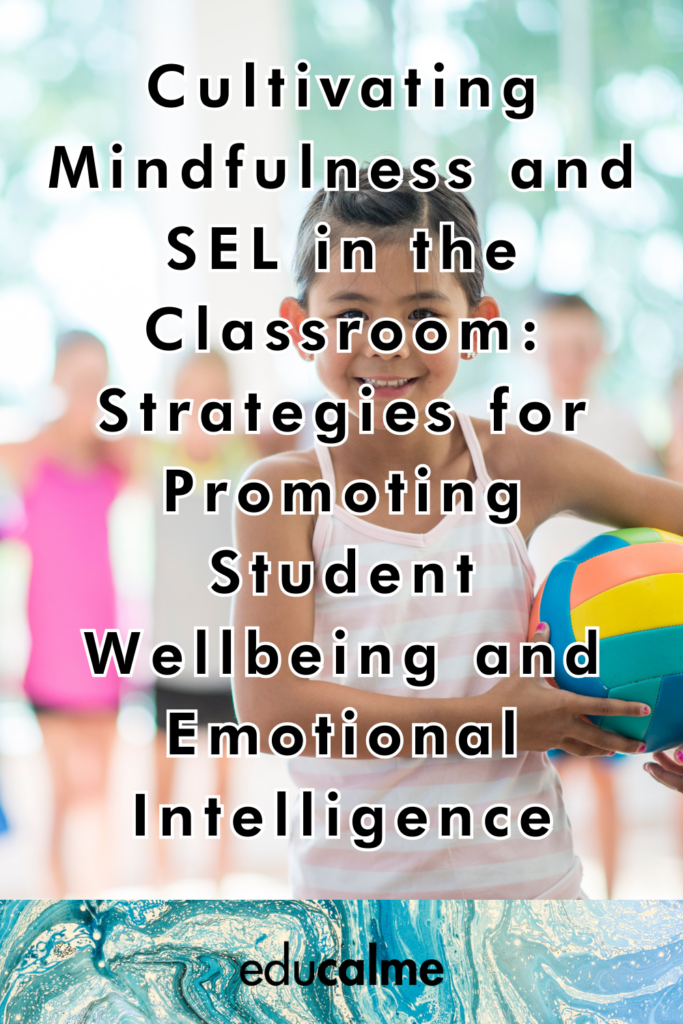Teaching can be a rewarding but challenging profession, especially in today’s fast-paced and ever-changing world. Students face a variety of stressors, from academic pressure to social and emotional difficulties, that can impact their wellbeing and mental health. As an educator, you have the power to make a difference in your students’ lives. This can be done by promoting mindfulness and social emotional learning (SEL) in the classroom.
In this article, we will explore different strategies for cultivating mindfulness and SEL in the classroom. This includes taking a trauma-informed approach, SEL curriculum, and social emotional learning activities. We will also discuss how these approaches can promote student wellbeing, emotional intelligence, and mental health. Finally, we will provide practical tips for creating a comprehensive teaching plan and accessing valuable mental health resources.
So let’s dive in and discover how you can incorporate mindfulness and SEL into your classroom today.
Before we delve into specific strategies, it’s important to understand what we mean by SEL and mindfulness. SEL is an evidence-based approach to education that focuses on developing students’ social and emotional competencies. According to CASEL, the Collaborative for Academic, Social, and Emotional Learning, SEL involves five core competencies. They include self-awareness, self-management, social awareness, relationship skills, and responsible decision-making.
Mindfulness, on the other hand, is a practice that involves paying attention to the present moment with openness, curiosity, and acceptance. It can involve techniques such as meditation, breathing exercises, and body awareness. By practicing mindfulness, students can develop greater self-awareness, emotional regulation, and cognitive flexibility.
Both SEL and mindfulness have been shown to have a positive impact on student wellbeing, academic achievement, and mental health. By combining these approaches, educators can create a powerful tool for promoting student success.
One important consideration when implementing SEL and mindfulness in the classroom is a trauma-informed approach. Trauma-informed care involves understanding the impact of trauma on students’ lives. It also involves creating a safe and supportive environment that promotes healing and resilience. Trauma can have a profound effect on students’ ability to learn and regulate their emotions. Therefore, it’s essential to create a classroom culture that is sensitive to their needs.
Here are some practical tips for implementing a trauma-informed approach:
By implementing a trauma-informed approach, you can create a classroom culture that promotes student wellbeing and resilience.
Another way to promote SEL and mindfulness in the classroom is through the use of an SEL curriculum. An SEL curriculum provides a structured approach to teaching social and emotional competencies. It can and should be tailored to the needs of your students.
Here are some examples of SEL competencies and activities:
By incorporating an SEL curriculum, you can provide students with the tools they need to navigate social and emotional challenges and develop critical life skills.
In addition to a structured curriculum, social emotional learning activities can help students develop mindfulness and SEL skills in a fun and engaging way. These activities can be integrated into everyday classroom routines and provide a break from traditional academic content.
Here are some examples of social emotional learning activities:
By incorporating social emotional learning activities into your classroom, you can promote a positive and supportive learning environment that fosters student wellbeing.
To effectively incorporate mindfulness and SEL into your classroom, it’s important to create a comprehensive teaching plan that integrates these approaches into your overall curriculum. Here are some practical tips for developing a teaching plan:
By creating a comprehensive teaching plan, you can ensure that mindfulness and SEL are integrated into all aspects of your classroom. Plus, you’ll know that your students are receiving the support they need to succeed.
Finally, it’s important to remember that you are not alone in promoting student wellbeing and mental health. There are a variety of resources available to educators that can help support your efforts, including:
By accessing these resources and others like them, you can expand your knowledge and skills in promoting student wellbeing and emotional intelligence.
In conclusion, incorporating mindfulness and SEL into your classroom can have a profound impact on your students’ wellbeing and success. By implementing a trauma-informed approach, incorporating an SEL curriculum, engaging in social emotional learning activities, creating a comprehensive teaching plan, and accessing valuable mental health resources, you can create a positive and supportive learning environment that fosters student growth.
Ultimately, promoting student wellbeing and emotional intelligence should be a priority for all educators. By incorporating mindfulness and SEL into your classroom, you can equip your students with the skills and tools they need to navigate the challenges of school and life with confidence and resilience.
Remember, promoting student wellbeing is an ongoing process that requires dedication and commitment. However, by implementing the strategies outlined in this article, you can make a positive impact on your students’ lives and create a supportive and empowering learning environment.
Don’t forget to take advantage of the valuable resources available to you, such as Educalme, CASEL, and the National Child Traumatic Stress Network. With their support, you can become a more effective and compassionate educator and help your students achieve success both inside and outside of the classroom.
So what are you waiting for? Start incorporating mindfulness and SEL into your classroom today and watch your students thrive. Don’t forget to check out Educalme’s free resources and start promoting student wellbeing and emotional intelligence today!
